Serviços Personalizados
Journal
Artigo
Indicadores
-
 Citado por SciELO
Citado por SciELO
Links relacionados
-
 Similares em
SciELO
Similares em
SciELO
Compartilhar
Acta Odontológica Latinoamericana
versão On-line ISSN 1852-4834
Acta odontol. latinoam. vol.22 no.3 Buenos Aires dez. 2009
ARTÍCULOS ORIGINALES
Overjet and overbite analysis during the eruption of the upper permanent incisors
Osmar A. Cuoghi, Rodrigo C. Sella, Igo Mamede, Fernanda A. de Macedo, Yésselin M. Miranda-Zamalloa, Marcos R. de Mendonça
Department of Pediatric and Community Dentistry, Dental School of Araçatuba, São Paulo State University, Araçatuba, SP, Brazil
CORRESPONDENCE: Dr. Osmar Aparecido Cuoghi Jose Bonifacio street, 1193 Aracatuba - SP - Brazil Sao Paulo State University - UNESP ZIP CODE - 16015-050 Telephone: 018-36363236 - e-mail: osmar@foa.unesp.br
ABSTRACT
The purpose of this study was to analyze the overjet and overbite behavior during eruption of the upper permanent incisors. Fourth-eight plaster casts of 16 patients from ages 6-13 years were appraised longitudinally. It was found that the overjet remains constant, starting at the eruption of the upper permanent central incisors until eruption of the upper permanent canine teeth, while the overbite increases after eruption of the upper permanent lateral incisors and remains constant with the eruption of the canine teeth.
Key words: Tooth eruption; Dental occlusion.
RESUMEN
Análisis del traspase horizontal y vertical durante la erupción de los incisivos superiores permanentes
El objetivo del presente estudio fue analizar el desenvolvimiento del traspase horizontal y vertical durante la erupción de los incisivos superiores permanentes. Se realizo un estudio de tipo longitudinal en cuarenta y ocho modelos de yeso de 16 pacientes entre las edades de 6-13 anos. Se encontró que el traspase horizontal permaneció constante al comienzo de la erupción de los incisivos centrales superiores permanentes hasta la erupción de los caninos superiores; por otro lado el traspase vertical aumento después de la erupción de los incisivos laterales superiores y se mantuvo constante con la erupción de los caninos.
Palabras clave: Erupcion dentaria, Oclusion dentaria.
INTRODUCTION
Throughout the development of occlusion, a particular relationship occurs between facial growth and tooth eruption1. The superior incisors exhibit considerable aesthetic and functional importance. In this context, important factors are involved in the positioning of the upper over the lower incisors, observed horizontally (overjet) and vertically (overbite)2,3. Overjet is defined as the projection of the upper anterior teeth over their antagonists in a horizontal direction when the mandible is in central relation. Alternatively, overbite is described as the projection of the upper anterior teeth over the lower teeth in a vertical direction when posterior teeth are in central occlusion2,4.
Due to dental eruption dynamics, considerable alterations are observed in the levels of overjet and overbite. In the deciduous denture phase, the incisors are more upright when compared with the occlusion established in the permanent denture. In the mixed denture, with the eruption of permanent incisors, the overjet tends to increase. On the other hand, in agreement with Molh et al.2, the overbite can present a small increase or even a reduction in the same phase. When the permanent denture is complete, the literature establishes 1 - 3 mm as standard parameters for both the overjet and the overbite. Several studies have attempted to establish guidelines to facilitate the diagnosis and the design of the treatment plan of overjet and overbite. Cuoghi et al.5 studied the behavior of the central and lateral upper incisors in the mesiodistal and labiolingual positions during the eruptive process in three different phases. The authors concluded that the upper permanent incisors are more lingually positioned after the eruption of the permanent lateral incisors and essentially remain in this position after the upper canine teeth erupt. It was also observed that the permanent upper incisors retain the same inclination level from the eruption of the central incisors to canine teeth eruption. According to Moorres et al.6 , the deciduous denture overbite can undergo changes or remain constant in the transition to the permanent denture. The overbite alterations are varied. Such discoveries serve as a reminder that the overbite is determined not only by the inclination and anteroposterior position of the incisors, but also by the influence of several factors. Among these factors, the height of the alveolar processes, as well as the facial vertical development. Moyers7 stated that from the beginning of the mixed denture phase to the establishment of the permanent denture, the overbite mean increases smoothly and then decreases. However, variations should be considered.
In 1987, Eberhart et al.8 showed an alteration ranging between 0.1 mm and 0.2 mm in the overbite level for each degree of the interincisors angle. However, the authors emphasized that clinically, the overbite modification cannot be exclusively related with these parameters. Bishara et al.9 followed individuals during a 40 year period, evaluating overbite modifications and assessing their potential relation with changes in the vertical face skeletal relationships. No significant correlation was found between the overbite absolute values and the skeletal vertical parameters for both sexes. Overbite alterations are probably dependent on simultaneous changes in the alveolar processes. Additionally, overbite variations with age are difficult to predict based on the current initial level in the deciduous or mixed dentures. On the other hand, the evaluation of individual plots showed that males, who initially had smaller overbites, maintained this tendency during subsequent stages of development. Within the context of the existing literature, the study of overjet and overbite behavior within the context of dental eruption dynamics, from the initial phase of mixed denture to the eruption of the canine teeth, becomes relevant and contributory. The purpose of this study was to evaluate/characterize the overjet and overbite behavior during the eruption phase of the anterior upper teeth.
MATERIALS AND METHODS
Forty-eight plaster casts from patients with an age range of 6 to 13 years were used for this study. The patients attended the Department of Pediatric and Community Dentistry, Discipline of Orthodontics, School of Dentistry, Sao Paulo State University, UNESP, Aracatuba - SP. The casts were selected from patients that presented normal occlusion, absence of poor oral habits, absence of dental anomalies and presence of all teeth, considering the age and the phase of occlusion development. The selected plaster casts were divided into three Groups:
- Group I: casts with only the upper central permanent incisors (Fig. 1);
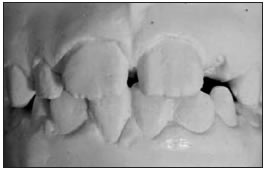
Fig. 1: Group I: Casts with only the permanent upper incisors erupted.
- Group II: casts with the upper central and lateral permanent incisors (Fig. 2);
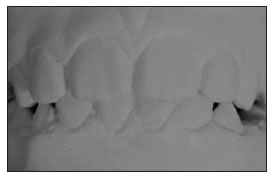
Fig. 2: Group II: Casts with the four permanent upper incisors erupted.
- Group III: casts with the upper central and lateral permanent incisors, including the upper canine teeth (Fig. 3).
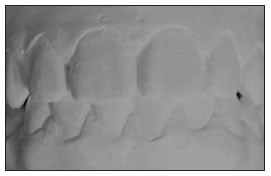
Fig. 3: Group III: Casts with the four permanent upper incisors and the canine teeth erupted.
To obtain the overbite and overjet values, the casts were articulated in the position of Maximum Habitual Intercuspidation (MHI) observed clinically and registered in wax. After stabilizing the casts in occlusion and with the same registration obtained in the patient’s MHI position, the edge of the upper central incisors was outlined on the labial surface of the lower incisors. The overbite value was obtained by measuring the vertical distance, in millimeters, from this mark to the incisal edge on the lower incisors’ labial surface (Fig. 4). The overjet was obtained by measuring the distance, in millimeters, between the labial surface of the more anterior lower incisor and the incisal edge of the more anterior upper incisor. These measurements were made using a caliper manufactured by Mitutoyo with calibration certificate number 00106000 (Fig. 5).

Fig. 4: Overbite measurement using a digital caliper.
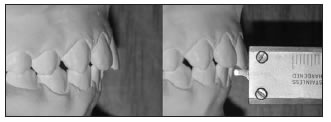
Fig. 5: Overjet measurement using digital caliper posterior prolongation.
It should be noted that a sample of 20 patients was initially selected. However, due to the discerning analysis established by the methodology, 4 adolescents were excluded, so that the sample’s final number was 16.
RESULTS
After data collection, the mean and standard deviation were obtained for each parameter. The mean values obtained for the overjet were 2.9 mm, 3.3 mm, and 3.3 mm, respectively, for Groups I, II, and III (Table 1). The values were submitted to an analysis of variance. According to the variance analysis for comparison, no statistically significant difference was observed among the three studied groups (Table 2).
Table 1: Normal occlusion overjet parameters

Table 2: Variance analysis for the comparison of overjet values

Regarding the overbite, the average values obtained were 2.4 mm, 3.1 mm and 3.2 mm, respectively for Groups I, II and III (Table 3). The variance analysis among the groups revealed a significant difference at 0.1% (Table 4). Tukey’s test established statistically significant differences when Group I was compared with Group II and when Group I was compared with Group III (Table 5).
Table 3: Normal occlusion overbite parameters

Table 4: Variance analysis for the comparison of overbite values

Table 5: Tukey’s test for the comparison of the overbite values

DISCUSSION
The phase of mixed denture involves many occlusal transformations that affect functional and aesthetic aspects. The permanent upper incisor eruptions are characterized by the lack of proportionality with the face and physiologic alterations. This causes concern in the youth and the parents who feel the need for eventual dental positioning corrections. Even when the anterior teeth are considered within the normal range in certain growth phases of dentofacial development, they might not be esthetically acceptable. Within this context, the professional must base diagnosis on parameters related to the sequential position of teeth throughout the different eruption movement phases. Thus, the present study involved the assessment of initial plaster casts of individuals with a mean age of 6 years and the follow-up of their development until the mean age of 13 years. Therefore, it was possible to evaluate the dynamics of incisor positioning from their eruption to the complete establishment of the occlusion with the eruption of permanent upper canine teeth, that in normal conditions are the last teeth to erupt in the upper arch2. To observe the details of possible overbite and overjet variations, overbite and overjet were measured in three phases: the phase with only the upper permanent incisors erupted (Group I), the phase with the four permanent upper incisors erupted (Group II), and the phase after the eruption of the permanent upper canine teeth (Group III), allowing for a longitudinal follow-up of the overbite and overjet. The knowledge of these factors becomes relevant, considering that Moorres et al.6 in 1969 stated that overbite alterations are varied. With the same reasoning, Moyers7 observed a small overbite increase from the mixed denture phase to the permanent denture. On the other hand, Bergersen10 demonstrated that the overbite is intimately related with the posterior teeth eruption.
Most of the authors determine that the overjet does not present significant changes from the mixed to the permanent denture11,12,13. However, Hoffelder et al.13 in 2002, observed that, in the period of 6 to 9 years old, the overjet increased 0.93 mm on average, with a statistically significant difference. In the current work, the overbite level observed in the plaster casts showing the eruption of only the permanent central incisors (Group I) was 2.4 millimeters on average. This value is equal to the value found by Di Nicolo et al.14 in 2001, when they analyzed the overbite level in the mixed denture. On the other hand, the overjet, in this phase (Group I), exhibited a mean value of 2.9 mm, in keeping with Molh et al.2 (1991). The results obtained in Group II, with the four permanent upper incisors erupted, showed an average overbite increase of 0.7mm, equivalent to an average value of 3.1 mm. This overbite value was significantly different to the Group I value, when only the permanent central incisors were erupted. Regarding the overjet, a small increase from Group I to Group II was observed, although this difference did not reach statistical significance. Regarding the dynamics of permanent central and lateral incisor eruption, a significant increase in the overbite was observed. Overjet showed minimal alterations that were not statistically significant (Fig. 6).
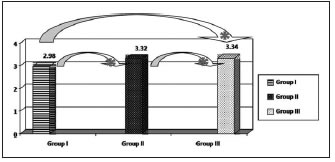
Fig. 6: Groups I, II and III overjet mean values.
The assessment of eruptive movements performed in the present study demonstrated that the overbite and overjet average values did not present significant modifications between the phase with all permanent incisors erupted (Group II) and even after the eruption of the permanent upper canine teeth (Group III). These results reveal that no significant overbite and overjet modifications occur in normal occlusions from the time of permanent upper lateral incisor eruption until permanent upper canine teeth eruption (Fig. 7). Bergersen10 also obtained similar results, in a longitudinal study of 60 individuals from 8 to 20 years of age. Based on cephalometric x-rays, the overbite established at approximately 8 years of age increases through 12 years of age and decreases from 12 to 18 years of age. There are indications that the overbite changes observed at different ages can be related to teeth exfoliation and eruption. These changes include an overbite increase during the change of deciduous incisors and molars, at around 8 to 11 years of age. The overbite remains constant from 11 to 12 years of age when there is no dental change, while from 12 to 13 years of age, during the second molar eruption, there is an overbite decrease. The overbite remains constant again from 13 to 16 years of age, before the eruption of the third molars, followed by another decrease around 19 years of age, during the third molar eruption. The results of the present study also verified that the overbite increases 0.7 mm, on average, after the eruption of the permanent lateral incisors and remains constant with the canine teeth eruption (Table 3). The results obtained by Hoffelder et al.13 are in agreement with the present findings which verified an increase, permanence or decrease in overbite during the transition from mixed to permanent denture. Ferreira15 emphasized that the permanent teeth are not perpendicularly implanted in the alveolar processes, as in the case of deciduous teeth. Instead, they have an individual labio-lingual inclination. This inclination enables the teeth to resist the functional stress on the stomatognathic system, justifying the overbite and overbite increase, during the anterior upper teeth eruption phase. The author also states that the canine teeth and deciduous molars are substituted by their successors, without causing significant overjet alteration. Di Nicolo, et al.
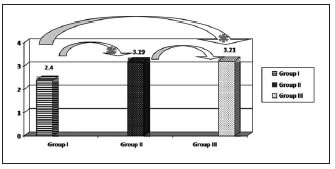
Fig. 7: Groups I, II and III overbite mean values.
None of the patients were submitted to any type of orthodontic treatment. The overbite increased from the mixed to the permanent denture, with average values of 1.42 mm, 2.32 mm and 3.16 mm, for the deciduous, mixed and permanent dentures, respectively. These results also show that there is a general consensus among the authors that overbite usually increases during the mixed and permanent denture periods, while it decreases slightly until the adult age. In the present work, no significant alterations in the overjet average values were found from the time of the eruption of the central incisors to the canine teeth eruption. Values increased by 0.3 mm from Group I to Group II, by 0.02 mm from Group II to Group III, and by 0.3 mm from Group I to Group III (Table 1). Similar results were found by Hoffelder et al.13, in a study of the same age range (9 to 12 years). Those authors found a 0.13 mm statistically insignificant variation in the overjet average value. However, in the same study, different results concerning the overjet were found in the period between 6 and 9 years of age. Overjet varied a statistically significant 0.93 mm on average, the largest variation found among the ages.
The overjet variation was larger in this period due to the change from deciduous to permanent incisors, the variation in the inclination of the same incisors, and divergent alveolar growth. Bishara et al.11 also failed to observe significant overjet changes when evaluating individuals from 5 to 15 years old.
CONCLUSIONS
Employing the methods described herein, the present data on upper incisor and canine teeth eruption dynamics reveal the following:
- The overjet, in Groups I, II and III did not present statistically significant differences;
- The overbite was significantly altered between Groups I and II, and between Groups I and III. Based on these findings we can conclude that:
- The overjet remains constant, at around 3 millimeters, from the eruption of the permanent central incisors to the eruption of the permanent upper canine teeth;
- The overbite increases after the eruption of the permanent upper lateral incisors and remains constant until canine teeth eruption.
ACKNOWLEDGMENT
CNPq / PIBIC provided partial financial support.
REFERENCES
1. Van Der Linden FPGM. Crescimento e Ortopedia Facial, 1a Ed., Sao Paulo: Quintessence 1990;163-225. [ Links ]
2. Molh ND, Zarb GA, Carlsson GE, Rugh JD. Fundamentos de Oclusao, 2a Ed., Rio de Janeiro: Quintessence 1991;47-71. [ Links ]
3. Ramfjord S, Ash MM. Oclusao, 3a Ed., Rio de Janeiro: Guanabara Koogan 1987;1-7. [ Links ]
4. Okenson J. Fundamentos da Oclusao e Desordens Temporomandibulares, 2a Ed. Sao Paulo; Artes Medicas 1992;60-67. [ Links ]
5. Cuoghi OA, Bertoz FA, Mendonca MR de, Santos ECA, Li AT. Labiolingual and mesiodistal positioning of maxillary permanent incisors during the eruption process. J Clin Pediatric Dent 2000;25:13-21. [ Links ]
6. Moorres CFA, Lebret LML, Frohlich FJ. Growth studies of the dentition: A review. Am J Orthod Dentofacial Orthop 1969;55:600-616. [ Links ]
7. Moyers RE. Ortodontia, 4a Ed., Rio de Janeiro: Guanabara Koogan 1991. [ Links ]
8. Eberhart BB, Kuftinec MM, Baker IM. The relationship between bite depth and incisor angular change. Angle Orthod 1987;60:55-58. [ Links ]
9. Bishara SE, Jakosen JR. Changes in overbite and face height from 5 to 45 years of age in normal subjects. Angle Orthod 1998;68:209-216. [ Links ]
10. Bergersen EO. A longitudinal study of anterior vertical overbite from eight to twenty years of age. Angle Orthod 1988;58:237-256. [ Links ]
11. Bishara SE, Peterson LC, Bishara EC. Changes in facial dimensions and relationships between the ages of 5 and 25 years. Am J Orthod Dentofacial Orthop 1984;85:238-252. [ Links ]
12. Ceylan I, Baydas B, Bolukbasi B. Longitudinal Cephalometric Changes in Incisor Position, Overjet, and Overbite Between 10 and 14 Years of Age. Angle Orthodontist 2002;72:246-250. [ Links ]
13. Hoffelder LB, Braga CP, De Lima EMS. Avaliacao longitudinal da sobressaliencia e da sobremordida em individuos portadores de maloclusao de classe II dentaria. Ortodontia Gaucha 2002;6:46-56. [ Links ]
14. Di Nicolo R, MCNamara Ja, Guedes CA, Barbosa CS. Desenvolvimento da sobremordida nas denticoes decidua, mista e permanente. J Bras Ortod Ortop Fac 2001;31:31-34. [ Links ]
15. Ferreira FV. Ortodontia: diagnostico e planejamento clinico. 3a ed. Sao Paulo;Artes Medicas 1999;58-72. [ Links ]














